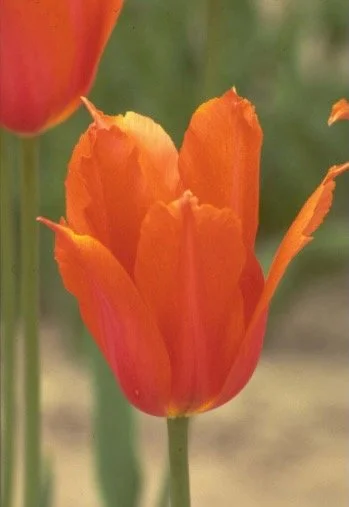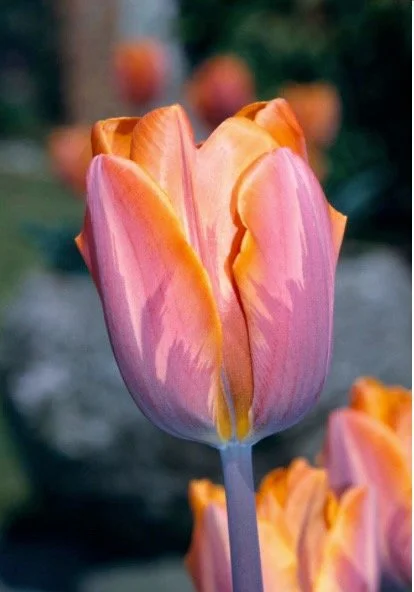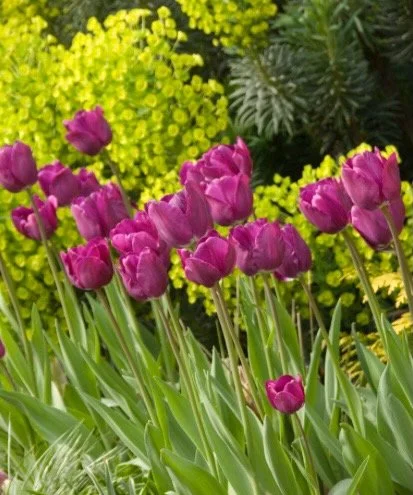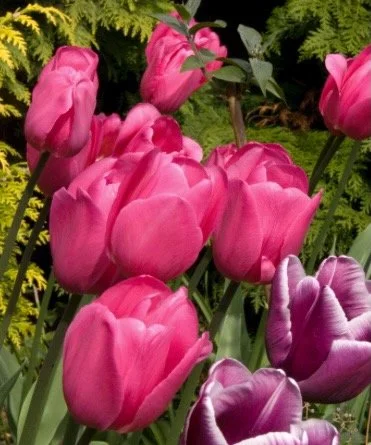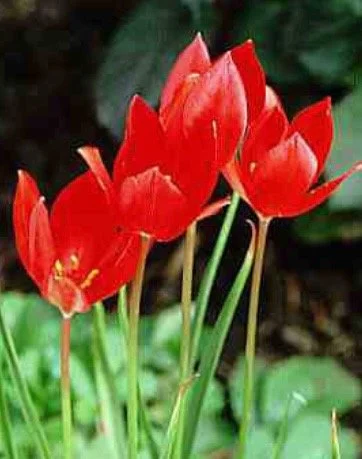November 2023 - Compost, Leaf Mould and Reliable Tulips
November Musings
It’s leaf kicking and collecting season!
Hello! I’ve recently noticed that late autumn and early winter unleashes the tidier in me. I sense the coming winds and rain and, every crisp sunny day is both a blessing and opportunity to put the garden to bed and maybe, just maybe, sort out our ever patient, ever cluttered garage! I wonder how long it will be until first frost? Heres a seasonal poem by Robert Louis Stevenson:
Wintertime
Black are my steps on silver sod;
Thick blows my frosty breath abroad;
And tree and house, and hill and lake,
Are frosted like a wedding cake.
For the love of gardening: Make your own Compost & Leaf Mould
Why bother? Both compost and leaf mould make a brilliant free-soil improver when spread over the soils surface or lightly forked in. they add valuable organic matter that improves your soil structure, aeration and biodiversity, aid drainage of heavy clay soils, and boosts water retention in free draining sandy soils.
Compost
How to make it? You can just pile everything in a heap but its more efficient to either make or buy a bin, preferably two. A successful bin should exclude rain, retain some warmth, allow drainage, and let in air.
Where? The best location is a sheltered spot in partial or full shade that you can easily get to. Stand your bin directly on the earth or grass.
What to put in it? I like to layer mine with green and brown material, a bit like a lasagne!
Green Materials include grass clippings, annual weeds, crop waste, old fruit, vegetables and kitchen peelings, fresh coffee grounds, tea bags.
Brown Materials include dry shredded or chopped woody waste, dead stems, straw, shredded paper, shredded cardboard, and dried leaves.
What not to put in it: any cooked food, meat, fish, poultry or dairy, citrus fruit and pernicious weeds.
Composting Tip: The trick is too not let either green or brown materials dominate, you need a balanced mix to prevent a slimy stickie mess, usually caused by too many crass clippings.
To air or not to air? If time isn’t a problem, you can just leave it alone to do its thing but ‘turning’ your compost a couple of times a year will add air and speed up the process. I do this by lifting the bin off the heap, reposition the bin and fork everything back in, from the top of the exposed heap to the bottom. I then close the lid and leave it alone to cook and start to make a new compost pile in an empty bin.
Having two bins on the go seems to work well, one turned and resting, one in the making.
When to use it? When its dark brown, crumbly and smells like damp woodland.
Use it as an autumn and or spring mulch and your plants will greatly appreciate your efforts.
Leaf Mould
It’s the perfect time of year to make leaf mould from deciduous trees and it makes a great soil improver and mulch. Leaves that break down the fastest include Oak, Beech, and Hornbeam. As a rough guide, the larger the leaf, the longer it takes. Green leaves be shredded first. Here’s two storage options to try:
1. Place the collected leaves into bin liners, moisten them if they’re dry, then pierce holes in the bag with a knife or garden fork, tie the tops loosely and stack the bags out of sight for up to two years.
2. Make a square or round frame with chicken wire and stakes or bamboo canes in a sheltered part of your garden where the leaves won’t get blown away. Make your leaf heap as large as possible (to hasten decay) and moisten it periodically if it becomes dry. Most leaves take about two years to break down and can then be used in the garden.Compost:
Plant Spotlight - Reliable repeating tulips
Tulipa 'Negrita' with Euphorbia
Do you wonder why the tulips you lovingly planted have disappeared by the following spring? Unlike daffodils and other spring bulbs, many tulip varieties are reluctant to naturalise or spread, let alone reliably reappear, each year. The good news is that some tulips can be left in the ground and are more likely to return.
Tulips love well drained soil and are ideal in pots where you can control the soil composition.
Here’s a selection of tulips that are more likely to flower reliably each year:
Some Tulips increase in numbers (naturalise). Here are three to try and, although most prefer a well-drained soil, Tulipa sprengeri and Tulipa sylvestris are useful because they prefer a damp spot in part shade.
The Potting Shed- Things to do in November / December
It’s the perfect time of year for digging and tree planting.
· Check your winter protection.
· Check that greenhouse heaters are working.
· Insulate outdoor taps.
· Prune open-growing apple & pear trees (but not wall trained trees)
· Acers, birches & vines cab be pruned from now until Christmas.
· Plant trees, hedges, and shrubs
· Harvest leeks, parsnips, winter cabbage, sprouts, and remaining root crops
· Take hardwood cuttings.
· Browse seed catalogues for perennials and other delights.
Happy Gardening!



